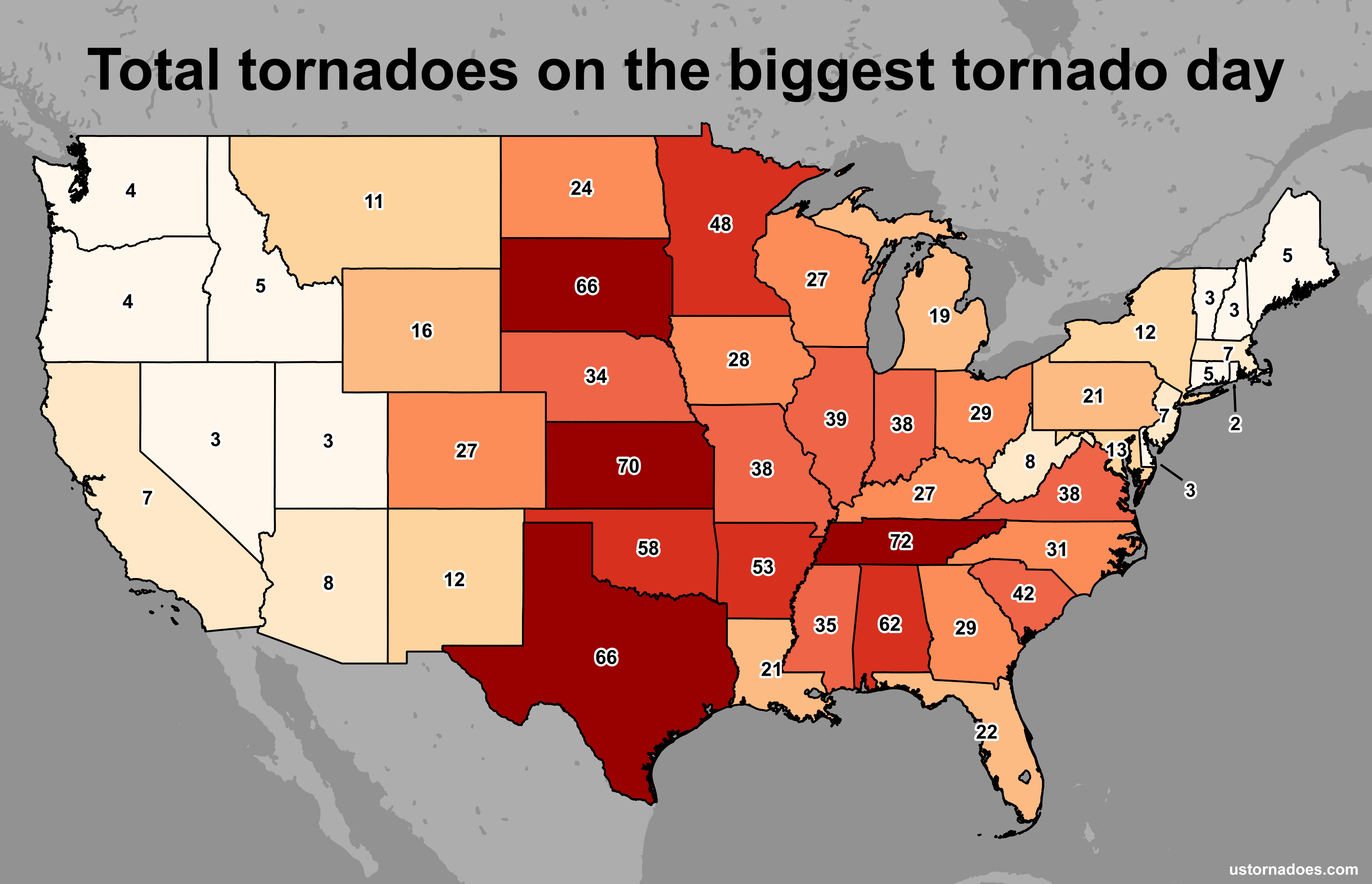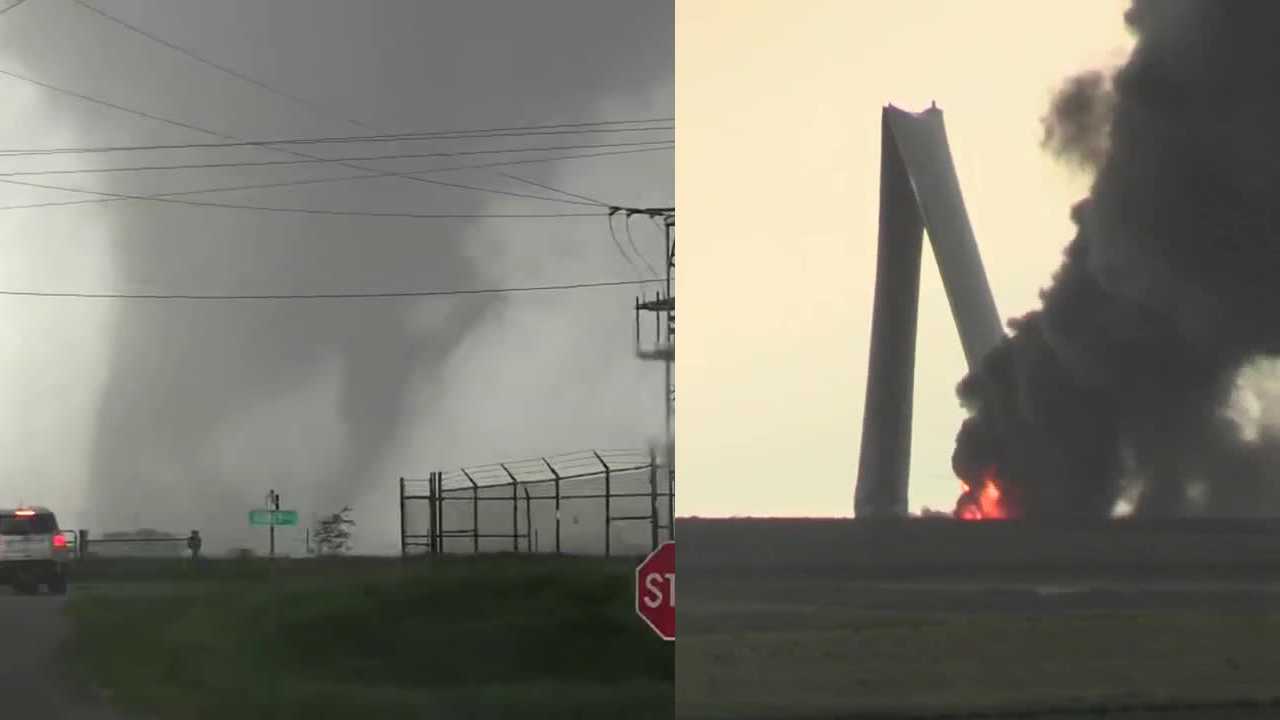Overview of Tornado Activity in Iowa Today

Tornado in iowa today – As of current date, multiple tornadoes have been reported across Iowa, affecting several counties in the central and eastern parts of the state. The National Weather Service has confirmed at least number tornadoes, with the most significant damage reported in affected areas. Emergency responders are currently assessing the extent of the damage and providing assistance to affected communities.
The devastating tornado that ripped through Iowa today left a trail of destruction in its wake. The twister touched down near Greenfield, causing widespread damage to homes and businesses. Read more about the Greenfield tornado today . The tornado continued its path of destruction across the state, leaving behind a path of debris and downed power lines.
The full extent of the damage is still being assessed, but it is clear that this tornado has had a significant impact on the communities it affected.
Damage and Injuries
The tornadoes have caused varying degrees of damage to homes, businesses, and infrastructure. Several structures have been completely destroyed, while others have sustained significant damage. Power outages have been reported in multiple areas, and some roads have been closed due to debris or downed power lines. There have been number reported injuries, including number serious injuries. Emergency medical services are providing care to the injured, and local hospitals are prepared to receive patients.
As the destructive force of tornadoes continues to ravage Iowa, one particularly devastating event has occurred in the town of Greenfield. Click here for more information on the tornado in Greenfield, Iowa. The wrath of the storm has left a trail of destruction in its wake, leaving countless homes and businesses damaged or destroyed.
The community has come together in the face of adversity, offering support and assistance to those affected by the tornado in Iowa today.
Tornado Safety Precautions
Tornadoes can be devastating forces of nature, but by taking precautions, you can help keep yourself and your loved ones safe. Here are some safety tips to follow before, during, and after a tornado.
The recent tornado outbreak in Iowa has left a trail of destruction, but resources are available to help residents navigate the aftermath. The iowa tornado map provides a comprehensive overview of the affected areas, allowing individuals to assess the extent of the damage and locate assistance.
As recovery efforts continue, the tornado map remains an invaluable tool for staying informed about the ongoing situation in Iowa.
Before a Tornado
- Create an emergency plan and practice it with your family. Your plan should include a designated safe place to go in your home, as well as an evacuation route in case you need to leave your home.
- Assemble a disaster preparedness kit that includes essential items such as food, water, a first-aid kit, and a battery-powered radio.
- Stay informed about weather forecasts and be aware of the signs of a tornado, such as a rotating funnel cloud or a loud roar.
During a Tornado
- If you are in a building, go to the lowest level and find a windowless room, such as a basement or interior bathroom. Crouch down and cover your head with your hands.
- If you are outdoors, lie down in a ditch or other low-lying area and cover your head with your hands.
- Stay away from windows, doors, and outside walls.
After a Tornado
- Check yourself and others for injuries. If you are injured, seek medical attention immediately.
- Be aware of downed power lines and other hazards.
- Listen to local news and weather reports for updates on the situation.
Tornado Forecasting and Tracking: Tornado In Iowa Today
Tornadoes are notoriously difficult to predict, but meteorologists use a variety of tools and techniques to improve their forecasts. Doppler radar is one of the most important tools for tornado forecasting. Doppler radar can detect the rotation of air within a storm, which can indicate the presence of a tornado. Other tools used for tornado forecasting include weather balloons, satellites, and computer models.
The relentless tornadoes that ravaged Iowa today have left a trail of devastation across the state. From the rolling hills of Greenfield, as seen in this detailed greenfield ia map , to the bustling cities, the storms have spared no corner.
With winds reaching speeds of up to 150 miles per hour, the twisters have uprooted trees, leveled buildings, and left communities reeling in their wake.
Once a tornado has been detected, meteorologists issue tornado warnings to alert people in the affected area. Tornado warnings are typically issued by the National Weather Service (NWS). The NWS also issues tornado watches, which indicate that conditions are favorable for tornadoes to develop. It’s important to stay informed about potential tornado threats by listening to local weather forecasts and following the NWS on social media.
Tornado Warnings and Watches
There are two types of tornado warnings: tornado warnings and tornado watches. A tornado warning means that a tornado has been spotted or indicated by radar. When a tornado warning is issued, you should take shelter immediately. A tornado watch means that conditions are favorable for tornadoes to develop. When a tornado watch is issued, you should be prepared to take shelter if a tornado warning is issued.
Staying Informed About Potential Tornado Threats
There are a number of ways to stay informed about potential tornado threats. You can listen to local weather forecasts, follow the NWS on social media, or sign up for a tornado warning system. You can also download a tornado safety app to your phone. By staying informed about potential tornado threats, you can help to keep yourself and your family safe.
Tornado Climatology in Iowa

Iowa has a long and well-documented history of tornadoes. The state is located in the central United States, in what is known as Tornado Alley. This region is characterized by frequent severe thunderstorms, which can produce tornadoes.
Iowa’s tornado season typically runs from April to June, with May being the peak month. However, tornadoes can occur at any time of year. The state’s most destructive tornado on record occurred on May 25, 2011, and killed six people and injured dozens more.
Most Tornado-Prone Areas of Iowa
The most tornado-prone areas of Iowa are located in the central and western parts of the state. These areas are home to a number of large cities, including Des Moines, Cedar Rapids, and Sioux City.
Factors Contributing to Tornado Formation in Iowa, Tornado in iowa today
There are a number of factors that contribute to tornado formation in Iowa. These factors include:
- The state’s location in Tornado Alley
- The presence of a strong jet stream
- The availability of warm, moist air
- The presence of lifting mechanisms, such as updrafts and fronts
Tornado Damage Assessment

Tornadoes can cause significant damage to buildings, infrastructure, and the environment. Assessing the extent of this damage is crucial for recovery efforts and insurance claims. The process of tornado damage assessment typically involves:
– Initial assessment: After a tornado, emergency responders and local authorities conduct an initial assessment to determine the severity of the damage and identify areas that require immediate attention.
– Detailed assessment: Once the initial assessment is complete, a more detailed assessment is conducted by engineers and other experts. This assessment involves examining the damage to buildings, infrastructure, and the environment, and collecting data on the intensity and path of the tornado.
– Damage classification: The damage caused by tornadoes is classified into different categories based on its severity. The Enhanced Fujita Scale (EF Scale) is commonly used to classify tornado damage, with EF0 being the weakest and EF5 being the strongest.
Reporting Tornado Damage
Reporting tornado damage is important for accessing assistance and ensuring that the affected areas receive the necessary resources. To report tornado damage, you can:
– Contact your local emergency management office or 911.
– Report the damage online through the National Weather Service website.
– Contact your insurance company to file a claim.
Accessing Assistance
After a tornado, various forms of assistance may be available to affected individuals and communities. This assistance can include:
– Financial assistance: Financial assistance may be available from government agencies, non-profit organizations, and insurance companies to help cover the costs of repairs and rebuilding.
– Housing assistance: Housing assistance may be available to those who have lost their homes or whose homes have been damaged. This assistance can include temporary housing, rental assistance, or home repairs.
– Food and water assistance: Food and water assistance may be available to those who have been displaced or whose food and water supplies have been disrupted.
– Medical assistance: Medical assistance may be available to those who have been injured or who need medical attention as a result of the tornado.
The recent tornado that swept through Iowa today left a trail of destruction in its wake. Iowa has a long history of tornadoes, with some of the most destructive ones occurring in the past few decades. Iowa tornadoes can cause significant damage to property and infrastructure, and can even be deadly.
It is important to be aware of the risks associated with tornadoes and to take precautions to stay safe.